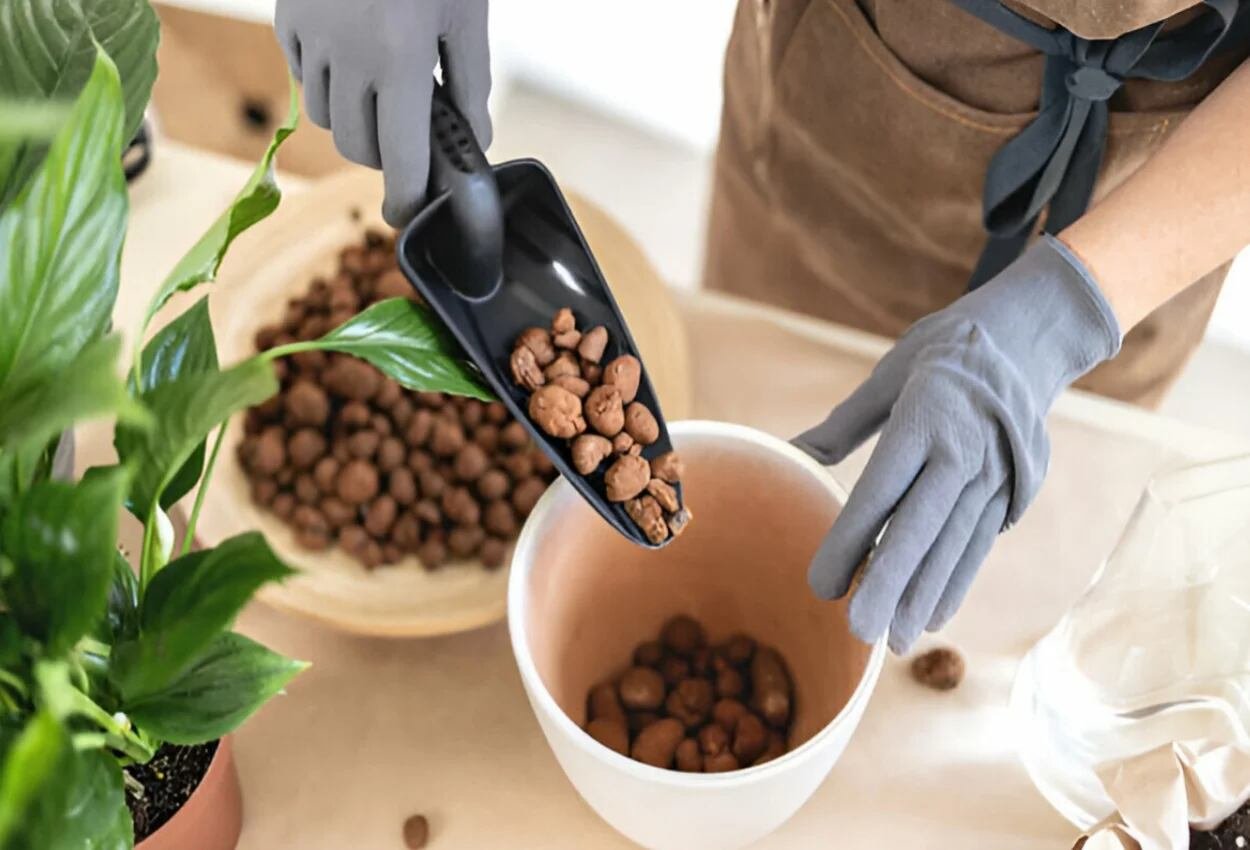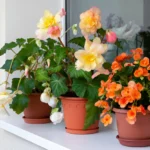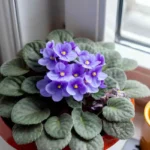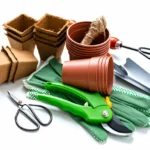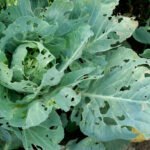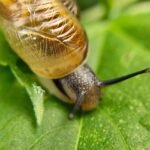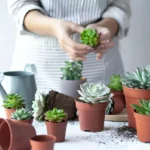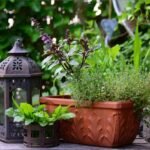The first time I saw Leca was on a plant visit, where I saw small perforated clay balls. When I asked the seller the name of this, he replied that it is Leca, and it is used after clay. I inquired about the price out of interest, and as far as I understood, the price was very high.
Leca is only available in a few stores. Online gardeners use it for gardening purposes, especially on Instagram and TikTok. However, we should experience using all the new things added to make gardening more accessible, and whether we use it for our purpose or not can be personal.
Anyway, this article will describe the leca for plants and its advantages and disadvantages. Stay tuned.
What is Leca?
Although Leca sounds small, its qualities emerge when Leca’s complete form is presented. Leca (Lightweight expanded clay aggregate) Molded balls are made by heating the clay at a high temperature inside a rotary kiln. Leca is made using clay, dust, minerals like albite, etc. Coatings are inorganic, lightweight, porous, calcium carbonate absorbents. Leca is also called clay plate, clay ball, aqua ball, hydro pebble, and hydro ball.
Leca is non-toxic to your plants and can be used on all plants.
The Leca balls can be used for a long time. They are not brittle and will not break if they fall out of your hands. You can blend them with a hammer or blender, but you can’t break them with your hands. Leca balls regulate ventilation and water humidity, which is essential for plants.
How Much is Leca Ball’s Price?
In America, you can get a one-litre bottle for 2.5-5 dollars in various online stores (price subject to change).
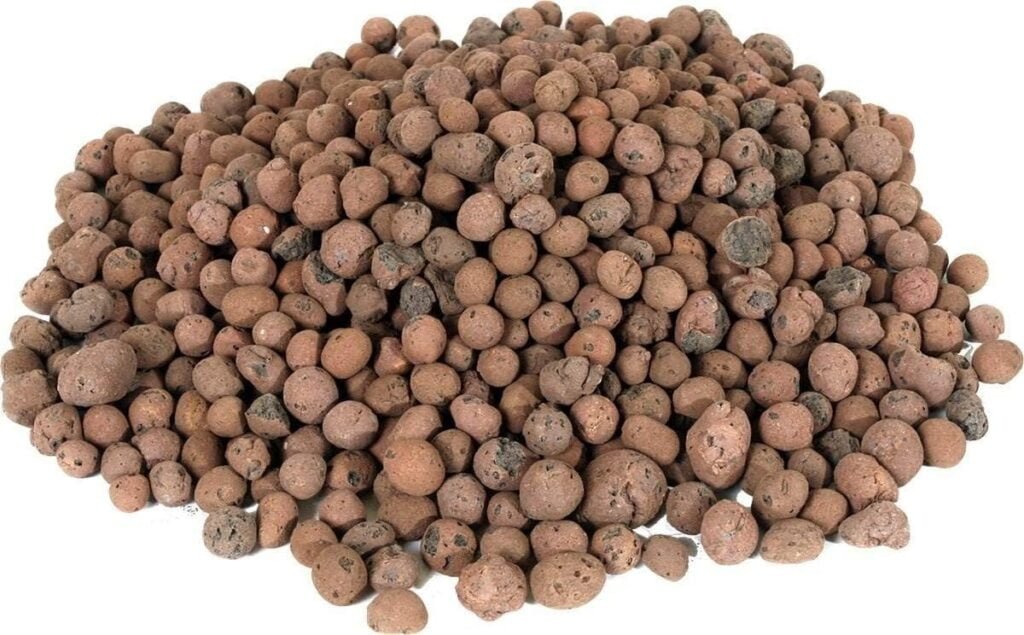
Difference between potting soil and Leca
Potting soil is clay, and Leca is a mixture of organic matter that contains high amounts of micronutrients. Leca is used in hydroponic and aquaponic systems.
Potting soil is used in commercial gardening. Liquid fertilizers are applied to grow plants in Leca, whereas potting soil contains different types of organic fertilizers that do not need to be mixed separately. Comparable potting soil is much cheaper than coated balls, which are expensive.
Potting soil tends to retain water, whereas Leca is porous and can collect water as much as it can and convey it to the roots of the next plant. Using the Leca balls in pots dramatically reduces the risk of plant root rot, whereas if you add too much water to the potting mix, there is a risk of root rot. Leca’s drainage system is perfect and developed, while potting soil could be better.
Potting soil and Leca both have advantages and disadvantages.
Preparation of Leca for use
You must wait to bring the Leica balls home and use them immediately. They are baked at a high temperature, resulting in a dry and crisp finish, but may contain clay dust, so you should wash the coated balls in water before use.
While washing, you boil the ball in hot water and soak it for at least 12-14 hours. Don’t worry—your Leca balls are firm and won’t swell from soaking in water. After the specified time, drain the water and dry the ball with a fan. Your coated balls are ready to use as a medium, substrate, and mulch.
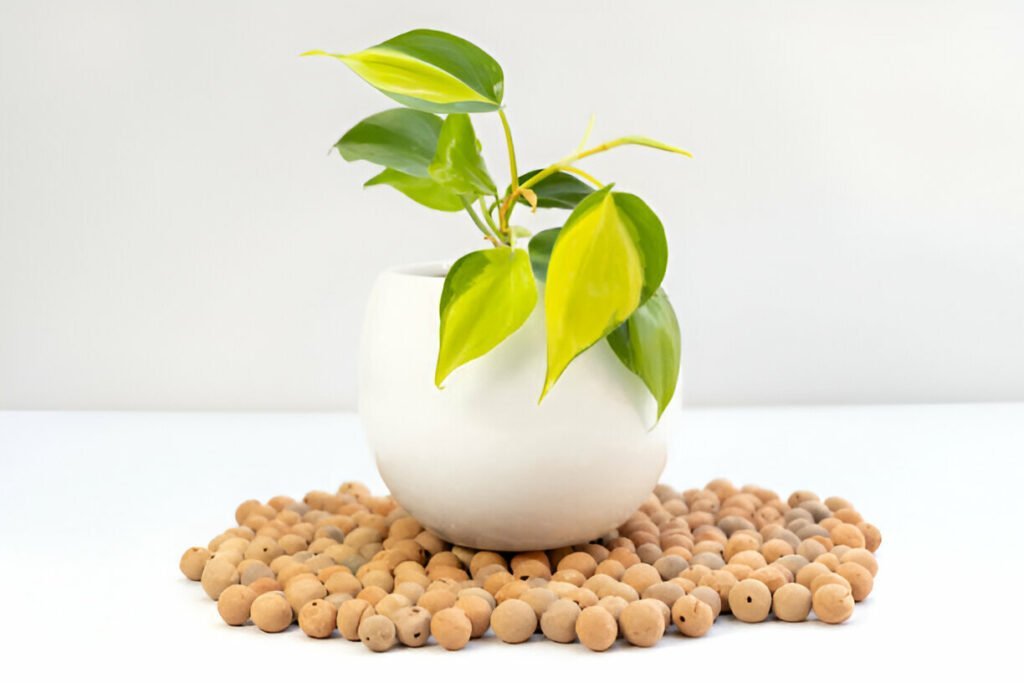
Leca Use for Plants
The Leca balls can be used for various purposes in gardening. From seedlings to seed production, substrate, and mulching, you can use Leca. Let’s see how else you can use Leca.
1. Seedlings from Seed
The hydroponic system previously produced seedlings are given. You can use Leca to grow seedlings. You will find Leca balls in different sizes in the market, from minor to medium and large. You will use the smallest ones for seeding. You take a small container box and put the processed coated balls in it. Then, you sprinkle the seeds on it. Add a small amount of water mixed with fertilizer to the leaves. Now, close the mouth of the container. Within 2/3 days, the seeds will break and sprout; in 7-10 days, the seedlings will germinate and produce first-stage leaves. In 11-15 days, you can connect your hydroponic system.
2. Seedlings from Cuttings
You can use Leca balls to propagate any Pothos-type plant from leaves or cuttings. Take the Leca in a container or a non-perforated pot and fill the pot with the Leca you have. Then, add water to the cuttings or twigs inside the coated balls. You don’t need to add liquid fertilizer to your seedlings; you can use a small amount of rooting hormone, which will help your cuttings to root and sprout faster. This way, you can grow seedlings of snake plants, golden pothos, philodendrons, monstera adansoniis, etc. Cuttings planted with Leca balls stick together, and there is less risk of being blown away. It also increases the success rate of seeding.
3. Use on Indoor Plants
You can replace the medium of your house plants with Leca. The plants are not given extra water if the Leca balls are used instead of soil. As a result, the roots of the plants do not rot, and there is a lot of space between the Leca balls where air pockets are formed. Plant roots can breathe through these pockets and grow roots. You can grow medium-sized plants like monstera, snake plant, lily, anthurium, pothos, ZZ plant, Chinese evergreen, and bird’s nest fern as indoor plants.
4. Drainage Layer
Coated balls are ideal as a drainage layer. You should take glass pots or plastic pots without holes and make sure the pots are transparent. It would help to fill the pots 3 or 4 cm below the top. Put the Leca in and then plant the indoor plants with the medium. While watering, make sure that water is given sparingly and that the water does not reach the roots of the plant (the water should stay up to the drainage layer); as a result, there is less risk of rotting the roots of your plant.
4. Wall or Hanging Pot
Leca balls are lighter than soil. When you plant plants in hanging pots and hang them on the wall, they become pretty heavy because of the soil. If you use Leca instead of soil, you can reduce the pot’s weight by more than half. As a result, there is less risk of hanging or wall pots falling over.
5. Mulching
When you water indoor plants, the soil stays wet, attracting insects. But if you use an inorganic material, the insects will not be able to produce eggs or larvae in the topsoil of your plant. The added advantage of using Leca balls is that your pet cat cannot tear up the soil. Moreover, Leca balls are non-toxic to your cat.
6. Use in Terrariums
You can use coated balls in terrariums. Choose the smallest size of Leca balls to use in the water level of the terrarium. You can also use a small amount of terrarium soil.
Besides this, gardeners use Leca in many other ways.
7. Adding Leca Fertilizer
You should use liquid fertilizer to cut plants or plant them in an indoor planter with Leca. Sadly, Leca does not contain any fertilizer or nutrients, and your cost will increase when you buy more fertilizer. You will find many fertilizers in liquid form, which can be used in hydroponic and semi-hydroponic systems. If you use Leca to plant from cuttings, you can do without fertilizer. But if you want to grow from plants or seeds, you must apply liquid fertilizer mixed with water.
8. Leca water change
It would help if you changed the leachate once every 1-2 weeks. You can also clean the pots and Leca balls with water or water mixed with hydrogen peroxide. Due to being in the water for a long time, the pots or Leca balls can produce mould and different kinds of insects and spiders.
Leca Pros and Cons
There are both pros and cons to using Leca in your garden. Let’s look at them:
Pros:
- Leca is capable of keeping away insects and rodents.
- It only requires a little equipment to use.
- Mulching can be done on topsoil.
- It stays well for a very long period and is not easily spoilt.
- Water can be given sparingly. Even if you must remember, no problem; Leca can hold water.
- Indoor plants are planted in transparent pots so that the roots of the plants can be seen and watered from the outside.
- Being extremely lightweight reduces the weight of the pot, making it easy to use as a wall or hanging pot.
- Non-toxic to humans and pets.
- When used as a substrate, the medium has plenty of air space, and roots proliferate.
- The risk of root rot can be avoided.
- Less water is required.
Cons:
- You can’t plant with Leca in a perforated pot. To use Leca, you need to collect pots without holes.
- It may need to be cleaned regularly.
- Fertilizer should be added to the water.
- Available online but relatively less available in stores.
- Leca is very expensive. That is why not all gardeners want to use it.
- Variations in plant growth and environment can affect pH values.
Mistakes to avoid
Newbies and inexperienced people make several mistakes while using Leca in gardening, which can even kill your plants. You should avoid these mistakes and use Leca wisely.
1. Sterilize Your Leca
Many people bring Leca home and use it directly on the plant. By doing this, the dust and mould or bacteria stuck to the Leca can spread to the roots and other parts of your plant. The first thing you should do after bringing your Leca home is to wash it and boil it in hot water. Then, you can soak it in water for 10-14 hours. As a result, no bacteria remain in the Leca balls, and you can use the Leca on your plants.
2. Watering Schedule
A hydroponic system is an essential combination of water and fertilizer with water. Many people have made hydroponic systems at home but must change and maintain the water at the right time. As a result, the growth of the plants will decrease, and the number of yields will decrease. Indoor hydroponic setups will only produce the desired results if they get the water flow and watering right. You can set a watering schedule in a calendar, notes, or reminder app. You can easily understand when the water needs to be changed and watered.
3. Plant at the Correct Depth
If the plant is not planted properly when placed in a container with a leaky ball, some new branches may not sprout due to the leaky ball. It will help if you keep the plant’s roots in proper range and don’t bury the plant’s stems and roots too deep. Monstera plants, in particular, grow new branches and leaves from the side of the stem. If you transplant the roots too deep, new branches will not be able to grow, and they will rot inside.
4. Increase Fertilizer
Adding a new hydroponic system to your setup will increase the amount of water and fertilizer you use. Many people see that they increase the setup but do not increase the amount of water and fertilizer. That cannot be done, and it can damage your plant.
5. Clean the Root Thoroughly
When you transfer the plant from garden soil or potting soil to Leca, thoroughly clean the plant’s roots with water. Having your plant in potting soil can cause soil to stick to the roots. Wash the roots thoroughly with a gentle pressure shower before you transfer the plant. If you see black roots anywhere, cut them off and put the plant in a pot.
6. Check Roots
Check once every 7-10 days after planting your plant in the Leca pot. Many gardeners do this by not checking the roots of the plants with a watering can. When you check regularly, you will easily detect whether your watering pot is getting overwatered or underwatered or if the roots are rotting, and you can treat the plant immediately.
7. Freshwater
The Leca pot or hydroponic system is entirely water-based, and you must occasionally add fertilizer to this water. You should check and change the water regularly. In Leca pots and hydroponic systems, the plant roots come in contact with the water, and the water slowly changes colour.
FAQ
1. Can I use broken Leca balls?
= Yes, you can easily use broken Leca balls.
2. Can I use tiny coated balls?
= Yes, you can. These are ideal for providing a drainage layer. You can use them to water the water layer in a terrarium.
3. Which is Leca vs Soil?
= In their respective specialities, everyone is the finest. We have shown above the advantages and disadvantages of Leca and soil. The matter is for what purpose you are using it.
4. How long have your plants lasted while in Leca?
= As long as you don’t overwater, these plants will survive.
